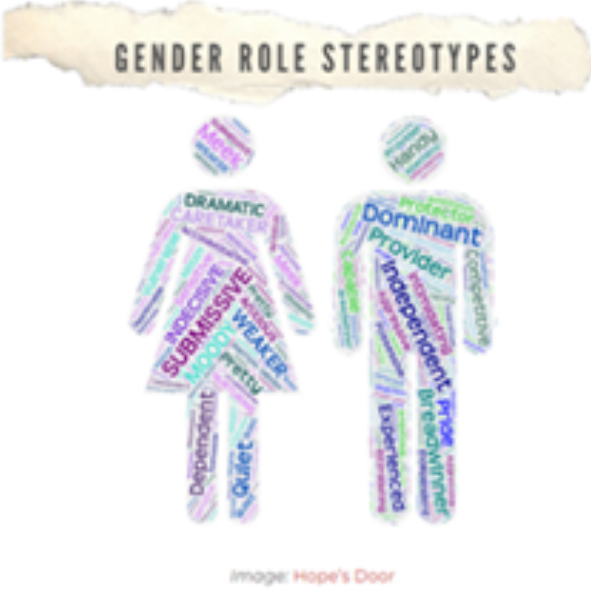Gender learning in Alice Munro’s short story entitled “Boys and Girls”
DOI:
https://doi.org/10.21070/jees.v8i1.1688Keywords:
gender learning, gender order, genderAbstract
The issues around gender is inexhaustible since gender can be analyzed from many perspectives. The focus of this paper is to discuss the gender learning experienced by the young girl in a short story entitled “Boys and Girls” written by Alice Munro. The discussion includes the young girl’s gender defiance, gender learning, and gender acceptance. To support the discussion several issues around gender are reviewed. Besides a comprehensive definition of gender, issues concerning doing gender, gender identity, gender order, gender segregation, gender learning, gender presentation, gender display, and others are reviewed. The analysis is also combined with the conversation analysis by considering the influence of the language that leads to gender learning of the female character in the short story. The methods used are a combination of library research method with its close reading, qualitative method, and contextual method. The result shows that gender learning is inevitable especially in an isolated place. Although the young girl tries to defy the gender learning she finally has to accept it. This situation correlates with Simone de Beauvoir’s statement “ONE is not born, but rather becomes, a woman” (De Beauvoir, 1956: 273) in her phenomenal book The Second Sex. Thus, the short story implies that being a girl in a strict male context is not easy, she has to surrender to the gender roles that are constructed for her, and the chances to actualize herself is limited or even non-existent.
HIGHLIGHTS:
- Gender construction is spread naturally through many ways, such as gender identity, gender order, gender display, or gender learning.
- The spread of gender construction can be done through daily examples or through language learning.
- Whatever gender defiance is carried out to escape from the gender construction, in the end, incessant gender learning results in gender acceptance.
Downloads
References
Archer, John and Lloyd, B. (2002). Sex and Gender. (Second Edi). Cambridge University Press. https://doi.org/10.1017/CBO9781139051910
Beard, A. (2004). Texts and Contexts. Introducing literature and language study. Routledge. http://ndl.ethernet.edu.et/bitstream/123456789/16251/1/pdf29.pdf
Behrendt, S. C. (2008). Contextual Analysis. http://www.unl.edu/english/sbehrendt/StudyQuestions/ContextualAnalysis.html
Birnbaum, D. W, & Croll, W. L. (1984). The etiology of children’s stereotypes about sex differences in emotionality. Sex Roles, 10, 677–691. https://psycnet.apa.org/doi/10.1007/BF00287379
Burr, V. (2022). Gender and Social Psychology. Taylor & Francis e-Library. https://doi.org/10.4324/9780203130414
Charlebois, J. (2011). Gender and the Construction of Dominant, Hegemonic, and Oppositional Femininities. Lexington Books. https://www.amazon.com/Gender-Construction-Hegemonic-Oppositional-Femininities/dp/073914488X
Creswell, J. W. (2009). Research design: Qualitative, quantitative, and mixed methods approaches. SAGE Publications. Inc. https://fe.unj.ac.id/wp-content/uploads/2019/08/Research-Design_Qualitative-Quantitative-and-Mixed-Methods-Approaches.pdf
De Beauvoir, S. (1956). Le Deuxième Sexe [The Second Sex]. Lowe and Bridone, Ltd. https://newuniversityinexileconsortium.org/wp-content/uploads/2021/07/Simone-de-Beauvoir-The-Second-Sex-Jonathan-Cape-1956.pdf
Farrokh, B. N. (2017). Being Gender/Doing Gender, in Alice Munro and Pedro Almadovar. https://ir.lib.uwo.ca/cgi/viewcontent.cgi?article=6877&context=etd
George, M. W. (2008). The Elements of Library Research. What Every Student Needs To Know. Princeton University Press. https://press.princeton.edu/books/paperback/9780691138572/the-elements-of-library-research
Goffman, E. (1976). Gender Display. Studies in the Anthropology of Visual Communication, 3, 69–77. https://repository.upenn.edu/svc/vol3/iss2/3/
Goldman, M. (1990). Penning in the Bodies: The Construction of Gendered Subjects in Alice Munro’s Boys and Girls. Studies in Canadian Literature, 15(1). https://journals.lib.unb.ca/index.php/scl/article/view8112/9169n
Holmes, M. (2009). Gender and Everyday Life. Routledge. https://xyonline.net/sites/xyonline.net/files/2019-08/Holmes%2C%20Gender%20and%20Everyday%20Life%20%282009%29.pdf
Hutchby, Ian and Wooffitt, R. (2002). Conversation Analysis. Principles, Practices and Applications. Polity Press. https://www.jstor.org/stable/24049819
Liddicoat, A. J. (2007). An Introduction to Conversation Analysis. Continuum. https://www.asian-efl-journal.com/an-introduction-to-conversation-analysis/index.htm
Lippa, R. A. (2005). Gender, Nature, and Nurture (Second Edi). Lawrence Erlbaum Associates, Inc. http://ndl.ethernet.edu.et/bitstream/123456789/46681/1/20.Richard%20A.Lippa.pdf
Lorber, Judith and Farrel, S. A. (Ed.). (1991). The Social Construction of Gender. Sage Publication. https://psycnet.apa.org/record/1991-97120-000
Malti-Douglas, F. (2007). Volume 2 (d-i). In Encyclopedia of Sex and Gender. The Gale Group. http://ndl.ethernet.edu.et/bitstream/123456789/41889/1/2%20.Fedwa%20Malti-Douglas%5BFedwa_Malti-Douglas%5D_Encyclopedia_of_Sex_and_Gend%28BookFi%29.pdf
Munro, A. (1968). Boys And Girls. http://womeninlit.tripod.com/alicemunro.htm
Murray, J. (2014). Not Entirely on His Side”: The Assumption of Sexed Subjectivity in Alice Munro’s “Boys and Girls". E-Rea [En Ligne], 12(1). https://journals.openedition.org/erea/4031
Phelan, J. W. (2021). Literature and Understanding. The Value of a Close Reading of Literary Texts. Routledge. https://doi.org/10.4324/9780429321382
Pilcher, Jane and Whelehan, I. (2004). Fifty Key Concepts in Gender Studies. SAGE Publications Ltd. https://doi.org/10.4135/9781446278901
Rubin, G. (1975). The Traffic in Women: Notes on the ‘Political Economy’ of Sex. In R. R. Reiter (Ed.), Toward an Anthropology of Women (pp. 157–210). Monthly Review Press. https://philarchive.org/rec/RUBTTI
Speer, S. A. (2005). Gender Talk. Feminism, Discourse and Conversation Analysis. Routledge. https://psycnet.apa.org/doi/10.4324/9780203321447
Stefanovici, S. (n.d.). Traditional socialization in A. Munro’s “Boys and Girls.” Retrieved December 24, 2018, from http://www.diacronia.ro/ro/indexing/details/V73/pdf
Sunderland, J. (2004). Gendered Discourses. Palgrave Macmillan. https://link.springer.com/book/10.1057/9780230505582
Sveinsdóttir, Á. (2018). Categories We Live By the Construction of Sex, Gender, Race, and Other Social Categories. Oxford University Press. https://philpapers.org/rec/SVECWL-2
Thacker, R. (2013). Alice Munro – Biographical. https://www.nobelprize.org/prizes/literature/2013/munro/biographical/
The gender conflict in Munro’s “Boys and Girls.” (n.d.). Retrieved December 24, 2018, from https://www.engelska.uu.se/digitalAssets/299/c_299583-l_1-k_a-level-%0Adiscussion-essay.the-gender-conflict-in-boys-and-girls.pdf%0A
West, Candace and Zimmerman, D. H. (1991). Doing Gender. In S. A. Lorber, Judith and Farrel (Ed.), The Social Construction of Gender (pp. 13–37). Sage Publication. https://www.gla.ac.uk/0t4/crcees/files/summerschool/readings/WestZimmerman_1987_DoingGender.pdf

Published
How to Cite
Issue
Section
License
Copyright (c) 2023 Ratna Asmarani

This work is licensed under a Creative Commons Attribution 4.0 International License.







